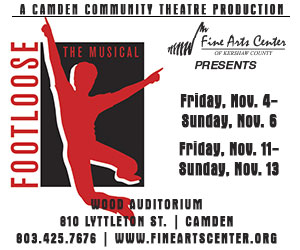Journy Wilkes-Davis – Telling Stories through Dance
By Bonnie Boiter-Jolley
Twenty-three year-old Journy Wilkes-Davis comes from a tight knit, supportive family of seven. The Columbia City Ballet dancer says that though his parents have always been “extremely supportive” of his dance career, they are also his biggest critics – something he is grateful for. It is no surprise that this combination of support and criticism have led Wilkes-Davis to constantly pursue the perfection of his craft. He credits his family with helping him to “see the bright side,” and to guide him through his most difficult decisions.
The eldest of five children, Texas born Wilkes-Davis leads a parade of performers, comprised of siblings Saif, Ransom, Vision, and Nations. Like their older brother, the four are each artistically gifted, specifically in dance, and have all been homeschooled by the equally talented matriarch, Milla Wilkes-Davis, a piano teacher and ballet costumer. When asked about his schooling, the dancer says he is pleased with his parents’ choice. Though he knows the goal was initially to protect him from the negativity of bullying and social cliques, he recognizes that the flexibility of homeschooling made scheduling training and rehearsals far more manageable as he became more serious about ballet.
Wilkes-Davis credits his father, Scott Davis’s, military career with affording his family the opportunity to experience a variety of cultures and lifestyles throughout his childhood, something the young man now says was hard, but “rewarding.” Wilkes-Davis lists Ochsenfurt, a small town in Germany where his family lived for close to seven years, as his favorite place to have lived. Coincidentally, Ochsenfurt is also where Wilkes-Davis first became acquainted with dance as his sister, Saif, began training at a local studio. Not until the young teen participated in the ballet, The Nutcracker, in Savannah at the age of 14 was his interest in the art form truly piqued. Dancing the title role opposite his sister as Clara, Wilkes-Davis observed and learned from the veteran dancers he saw in rehearsals. Inspired by the heights to which former American Ballet Theater and Columbia City Ballet dancer, Dagoberto Nieves, was able to soar in his role as the Sugar Plum Cavalier, Wilkes-Davis was determined to study ballet himself. Wilkes-Davis soon fell in love with the movement and set his sights on a career in a dance. Wilkes-Davis continues to look to more experienced dancers for inspiration and growth, specifically gravitating towards those who are “continuously dedicated to improving their craft.”
Though road blocks have been sparse in his professional pursuits, the young artist has encountered speed bumps along the way. “I’ve had the challenge of not knowing when it’s time to move on,” he says. Wilkes-Davis refers to an experience just out of high school with a company trying, and failing, to “get off the ground.” That particular experience ultimately led him to realize he wanted, and needed, more training in classical ballet. Wilkes-Davis alludes to experiences with other companies when the positive aspects ran their course and the work place became toxic. “The hardest part for me was accepting that I couldn’t make everyone happy and, ultimately, what was best for me was what mattered.”
Now in his fourth year in South Carolina and his second season with the Columbia City Ballet, Wilkes-Davis’s list of goals continues to grow. “I still have a lot to work on as a male dancer,” he modestly says, listing technique, flexibility, jumps and turns as his primary concerns. Wilkes-Davis cites the stage acting required of all professional dancers as a “constant struggle.” The delicate balance between reacting naturally on stage and telling a story to an audience on a grand scale is difficult to master. He admits that his personal philosophy on training has been influenced by his experiences teaching ballet. Rather than sitting back and waiting for a teacher to offer correction, the athlete now challenges himself to find new ways to work on his own craft. “I wasted too much time expecting teachers to help me when I should have been helping myself,” he recalls.
Recently engaged to fellow CCB dancer, Anna Porter, Wilkes-Davis says he hopes to always be involved with dance in some way, “Whether I’m teaching, choreographing, or even directing, I love dance too much to completely stop after I’m done performing.” Though the young artist admits that when he first started dancing he dreamt of joining a big company like the American Ballet Theater in New York City, he now believes “you can find fulfillment in whatever place you work.”
Wilkes-Davis’s appreciation of dance continues to evolve with age. “The older I get the more I find something to appreciate in every type of dance,” he muses. “I see now that every type of dance is telling a story.” Journy Wilkes-Davis hopes his story involves dancing happily for a long, long time. “I want to be a dancer that can transport the audience to a place where they can forget about their worries and problems for a while, and just enjoy the beauty of dance.”






.jpg)
